Spirit of Invention: The Gee’s Bend Quilters

Blocks And Strips Work-Clothes Quilt / Lucy Mooney / c. 1935 / Cotton, denim, wool, Photo courtesy of Souls Grown Deep. © 2018 [Stephen Pitkin/Pitkin Studio] / Artists Rights Society (ARS), New York
Michael Kimmelman, New York Times, 2002
Brilliantly eccentric and ludicrously inventive, the multi-generational quilts emerging from Boykin, colloquially known as Gee’s Bend, in Alabama are now recognised as some of the finest art works of all time. Hailing from a small rural region of Alabama, the Gee’s Bend community is entirely unique in its tradition for sharing an insular, vernacular creative language of folk art through three or four generations of women, one that is still very much alive today. Now held in museum collections around the globe, these quilts tell a remarkable story of endurance, perseverance and ingenuity. Their playful geometric language has been compared with the creativity of jazz music, and particularly abstract art, as Alvia Wardlaw, curator of Modern and Contemporary Art at the Museum of Fine Arts, Houston observes, “There’s an improvisational range of approaches to composition that is more often associated with leading 20th-century abstract painters than it is with textile-making.”
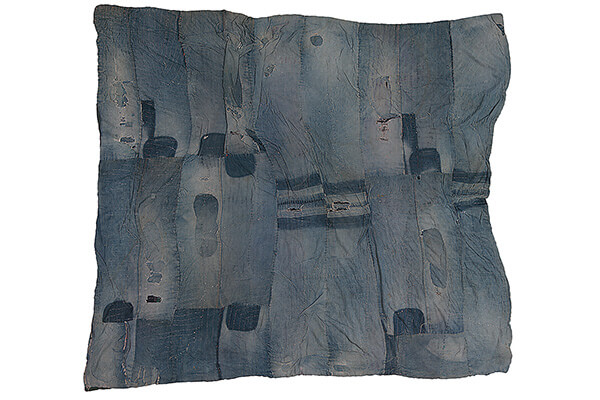
‘Bars’ Work-Clothes Quilt / Lutisha Pettway / c. 1950 / Denim and cotton, Photo courtesy of Souls Grown Deep. © 2018 [Stephen Pitkin/Pitkin Studio] / Artists Rights Society (ARS), New York
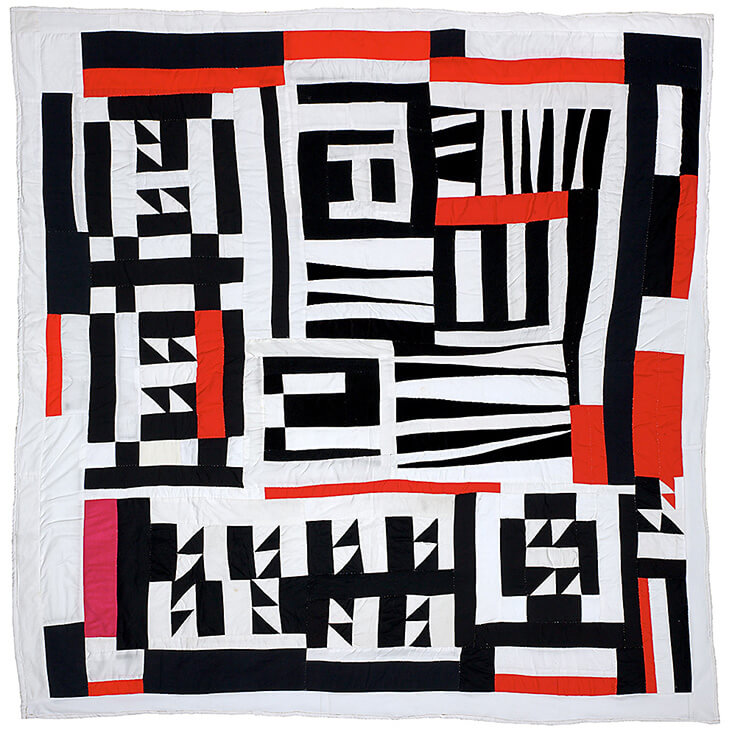
Blocks And Strips / Loretta Pettway Bennett / 2005 / Cotton, Photo courtesy of Souls Grown Deep. © 2018 [Stephen Pitkin/Pitkin Studio] / Artists Rights Society (ARS), New York
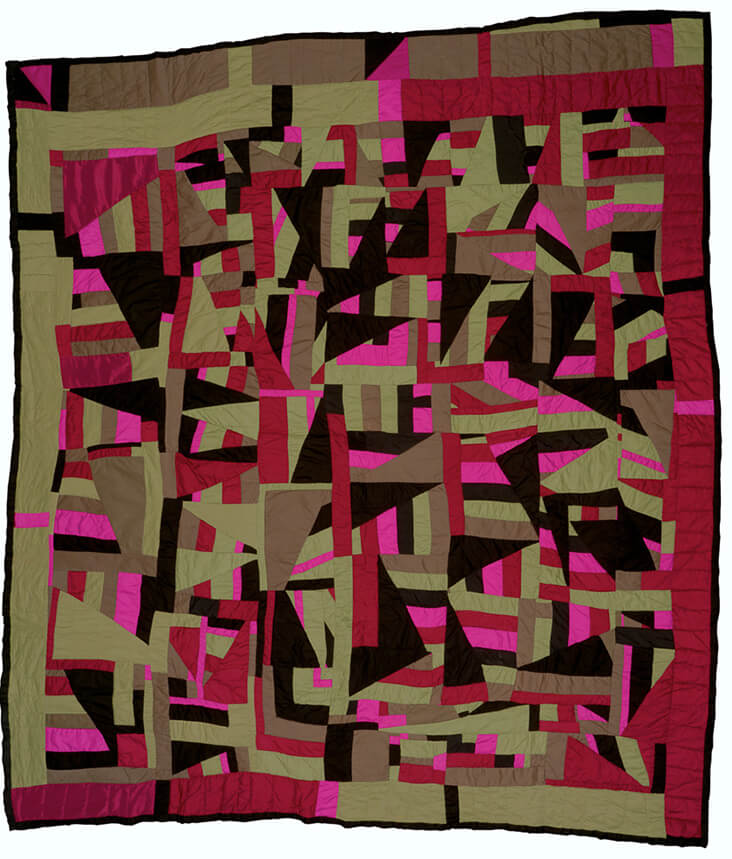
Broken Pieces / Marlene Bennett Jones / 2008 / Cotton and cotton/polyester blend, Photo courtesy of Souls Grown Deep. © 2018 [Stephen Pitkin/Pitkin Studio] / Artists Rights Society (ARS), New York
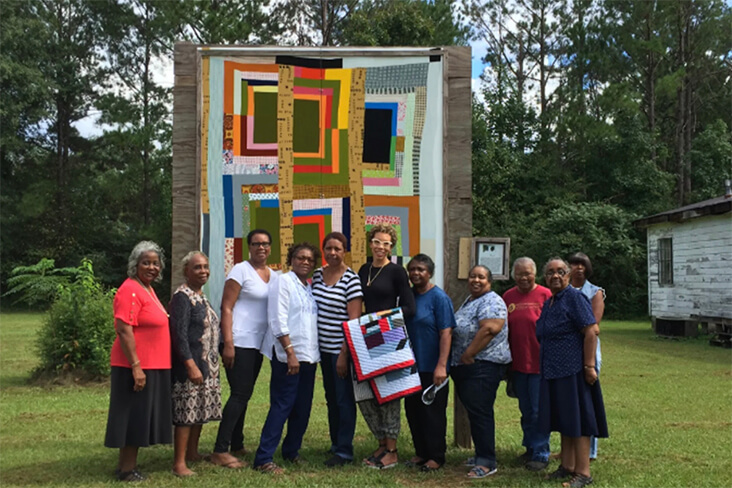
Members of the Collective pose with Amy Sherald (holding a quilt). Behind them is a painted mural based on a quilt Mary Ann Pettway’s mother made. Alex Ronan/The Outline
Some members of Gee’s Bend quilting groups joined the Black Belt Alabama Freedom Quilting Bee Cooperative in the 1960s as a way of generating income for their families, a lucrative enterprise that led to booming sales in New York City. On the back of this success several Gee’s Bend quilters established a deal with Sears to produce a series of corduroy pillow covers. Despite the strict limitations of their brief, makers found surprisingly inventive ways of bending the mould, while many brought leftover scraps of cord home to reinvent into new works of art.
By the 1990s quilting was a dying art in Gee’s Bend, with only a handful of practitioners still pursuing the age-old craft. But art historian William Arnett recognised the extraordinary talent of these makers and was instrumental in bringing their art out into the wider population with a series of high-profile museum exhibitions. Since this time their acclaim has been on the rise, inspiring generations of quilters old and new to resurrect the community traditions. Their astonishing designs from throughout the generations are held in the Whitney Museum of American Art, Philadelphia Museum of Art, Metropolitan Museum of Art, along with numerous others, and lauded as some of the most important works of American modernist art in existence. American painter Amy Sherald paid a fitting tribute to their legacy in her portrait of Michelle Obama, dressing the former First Lady in clothing inspired by Gee’s Bend quilt designs, mirroring their timeless and iconic interplay of geometry, order and chaos.
The car ferry at Gee’s Bend, May 1939. White county government ended the ferry service in the 1960s to discourage voter registration.





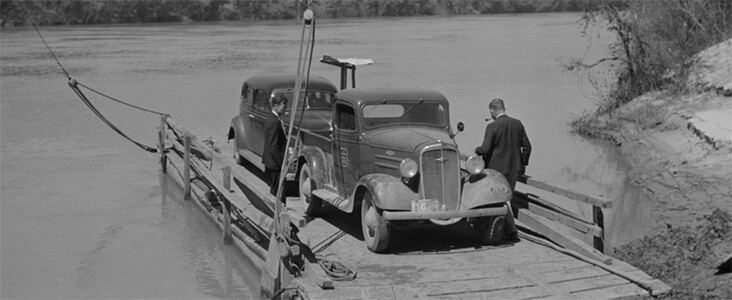
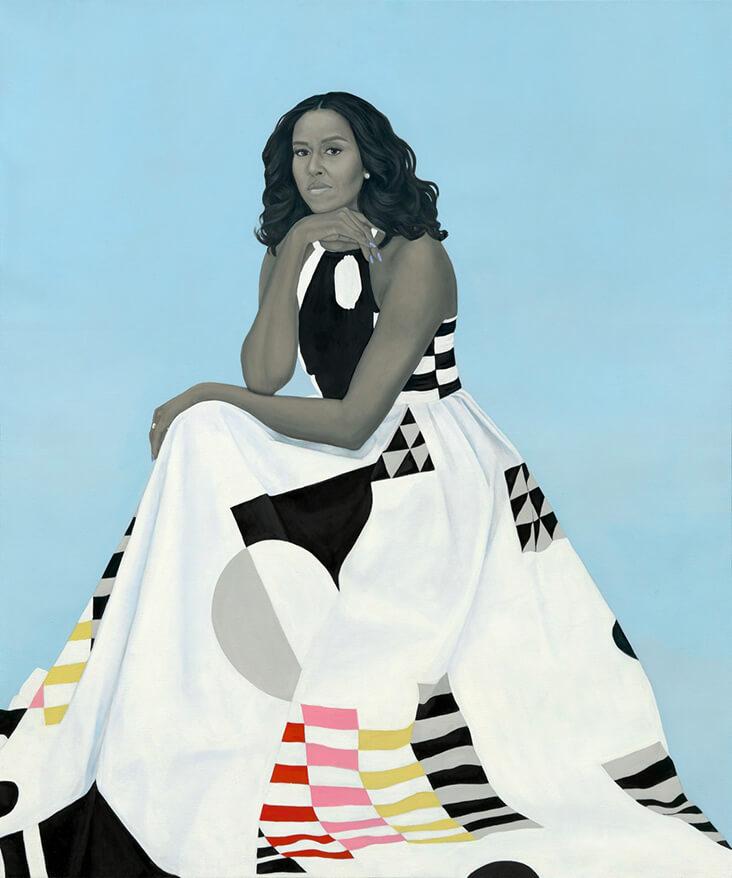


















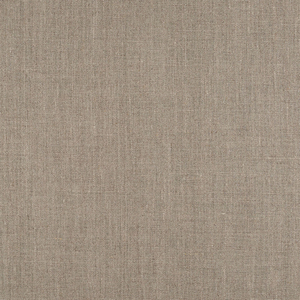

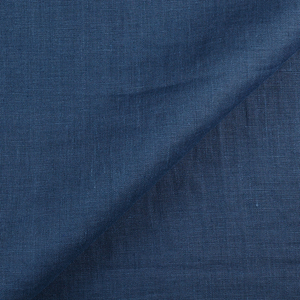




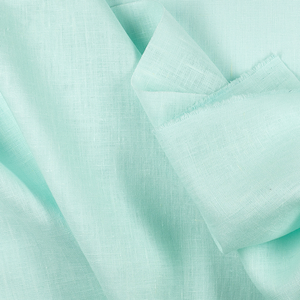

















5 Comments
Nancy Burnett
Thanks for posting this article again. It’s a vital bit of our shared history as well as art worth highlighting anytime. Also I appreciate the variety of articles shared. Well done!
Kristin Mak
Although the piece on the quilts is interesting, informative- I found the end note rather infuriating: “The car ferry at Gee’s Bend, May 1939. White county government ended the ferry service in the 1960s to discourage voter registration” In my opinion, I feel it should have read :”The ferry was shut down in 1962 by Wilcox County officials as part of the effort to keep African Americans from registering to vote during the civil rights movement.” (source http://www.encyclopediaofalabama.org/article/m-2256 ) I am white, and I had nothing to do with shutting the ferry service down! The way it’s written is as if to shame, chastise “white people” in general. White government isn’t inherently evil. No color/race government could be- it is individual evil extant that is the cause of suffering. Race baiting must end. It is merely racial division, and that in itself is the same division behind the shutting down of the ferry by Wilcox County officials in 1962.
Susan Jackson Rafter
If you read the entire article, you would also see that county government stepped in to help alleviate the extreme poverty in the region. One would also assume that this was also “white” government as there were no POC in office at the time and in that area. History is history and should not not to be taken personally, nor is true history “race baiting”.
Christina Daily
As usual, Rosie Lesso has provided a lovely peek into another important fiber art. For serious quilters the quilts from Gee Bend have long been an important part of the heritage and resurgance of quilting in America. Thank you for your sensitive and delightful articles.
Rosie Lesso
Thank you for the kind words!